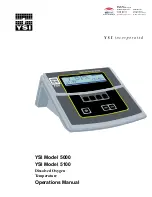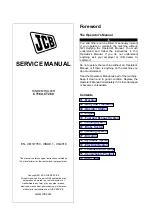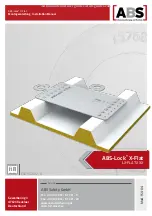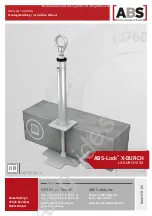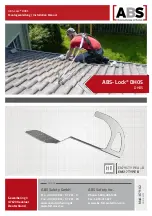
8
5.
When prompted by the instrument, connect the free end of the sample hose to the vehicle air conditioning system or
refrigerant storage cylinder port and press the “A” pushbutton. Sample gas will immediately begin to flow into the
instrument. The instrument will require approximately 30 seconds to complete the sample gas analysis.
6.
When the analysis has completed immediately disconnect the sample hose from the refrigerant source.
Note:
The instrument contains no automatic shut-off and refrigerant vapors will continue to flow out of the source as
long as the hose is connected. To conserve refrigerant stores and prevent excessive refrigerant venting,
DO
NOT
leave the instrument unattended during analysis cycles and disconnect the sample hose from the source
immediately after prompted by the instrument.
7.
The results of the analysis will be presented to the user on the instrument display.
a)
PASS:
Indicated whenever a sample is detected to have 98% by weight or greater of R12 or R134a. The refrigerant
type and air concentration will be indicated.
b)
FAIL:
Indicated whenever a sample is detected to be a blend of R12 and R134a refrigerants with neither R12 or R134a
having 98% by weight or greater concentration. The weight percentages of R12, R134a and air will be indicated.
c)
FAIL CONTAMINATED:
Indicated whenever unknown refrigerant types such as R22 or Hydrocarbons have been
detected in concentrations of 4% by weight or greater. No weight concentrations of refrigerants or air are provided in
this mode.
d)
NO REFRIGERANT –
CHK HOSE CONN:
Indicated whenever a sample is detected that contains 90% by weight
or greater air. This condition usually occurs when the R134a sample hose coupler has not been opened, the sample
hose has not been connected to the sample source, or if there is no refrigerant present in the sample source.
8.
The instrument will keep the analysis results on the display until the user presses the “A” pushbutton. Once the “A”
pushbutton is pressed follow the directions on the screen.
9.
If another sample run is desired, follow the prior instructions from step 5. If no other sample run is desired disconnect the
power harness from the vehicle or the wall outlet to end the routine.
C. Post-Operation Procedure
1.
Disconnect the sample hose from the instrument sample inlet port. Inspect the hose for signs of wear, cracking, oil fouling
or obstruction and replace if necessary. Clean the outside of the hose, coil and stow into the storage case.
2.
Inspect the sample filter white element outside diameter for the presence of red spots. If any red spots are found, replace
the sample filter as directed in the maintenance procedures.
3.
Disconnect the power harness from the instrument, clean, coil and stow into the storage case.
4.
Clean the outside of the instrument of dirt, grime, oil, etc. with a moist rag. Do not use cleaning solutions or water on the
instrument. Stow the instrument into the storage case.














